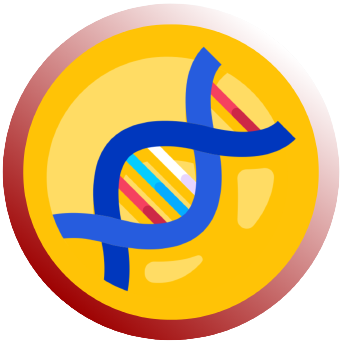Danielle Zak—McMaster Life Sciences OOD 2024
Cancer is a disease, resulting from a mutation which causes cells to divide uncontrollably1 and skip cell cycle checkpoints. This results in a tumor, a mass of damaged cells 1left undestroyed. Tumors are classified as either benign or malignant. Benign tumors are not able to spread 1to other regions of the body as they grow. Conversely, malignant tumors can metastasize, spread to other parts of the body as pieces of the original tumor break off and travel through the bloodstream.1 Cancers are predominately categorized as either carcinomas, sarcomas, leukemias or lymphomas, depending on the original cancerous tissue.1
Immunotherapy is a cancer treatment which attempts to boost the immune response of the human body.2 An example of such treatment are cancer vaccines, which administer cancer-specific antigens, molecules for which antibodies are produced, found exclusively on the surface of cancerous cells.2 Personalized cancer vaccines are created using the cancer-specific antigens found on tumor cells of a specific patient.2 Once a patient’s tumor is partially removed during surgery, a vaccine may be tailored using the specific antigens present on the surface of the removed cancerous cells.2
Personalized cancer vaccines contain patient-specific tumor derived epitopes,3 which are regions of the cancer-specific antigens that are recognized by the immune system.4 The immunoresponse to the epitopes is produced by cytotoxic T cells, also known as killer T cells. Cytotoxic T cells are lymphocytes (type of white blood cell) that respond to cytokines and kill cancer cells.5
One type of personalized cancer vaccine is the neoantigen cancer vaccine,3 that uses the specific neoantigens from different mutations of individual patients’ tumors as a component of the vaccine. These neoantigens can be mRNA, DNA, and peptides.3 The synthesis of such vaccines uses next-generation sequencing which maps all the mutations relevant to the patient’s cancer, and gives a neoantigen prediction.3 Then, algorithms and techniques are used to determine which neoantigens3 are specific to the malignant tumors, and which are also present on non-cancerous cells.
Another type of vaccine uses autologous tumor cells, which are cancer cells directly from the patient’s tumor.3 These cells are extracted from the patient, are treated, and then re-administered as either components of cells or as whole cells.3 As a result, autologous tumor cell vaccines contain all the patient-specific tumor-derived antigens, making this type of vaccine faster to produce.3
Personalized cancer vaccines can be injected subcutaneously (under the skin) or intramuscularly (into the muscle), depositing a mass of antigens in the interstitial fluid (fluid surrounding cells).3 The injected antigens are only processed by the immune system once they diffuse into capillary vessels, therefore only a small percentage of the injected antigens are processed.3 As a
consequence, dosage and frequency of administering the vaccine must be increased for the T cell response to be sufficient.3 Therefore, various delivery vectors, including cell vesicles, liposomes, cells and synthetic carriers are used to increase the strength and duration of the immune response.3 Additionally, there are three types of vaccine delivery strategies based on the location of antigen introduction.3 These strategies are LN-targeting (through lymph nodes), intratumoural action (into tumor) and depot-forming (injects vaccine in scaffold to form a depot).3
There are many human clinical trials testing different personalized vaccines. A trial conducted by Moderna and Merck study mRNA-4157, which is in Phase 1.6 The personalized cancer vaccine will be synthesized using the information from specific mutations in 20 neoepitopes to create a single mRNA vaccine that will be injected into the patient.6 Ultimately, personalized cancer vaccines indicate to the immune system which antigens should be targeted, since various malignant tumors have different cell surface antigens.2 The field of immuno-oncology is ever growing with new personalized vaccine types, delivery vectors and delivery methods constantly being tested and researched.
References
1. What is Cancer? [Internet]. Cancer.Net. 2019 [cited 2021 Dec 10]. Available from: https://www.cancer.net/navigating-cancer-care/cancer-basics/what-cancer
2. What are Cancer Vaccines? [Internet]. Cancer. Net. 2020 [cited 2021 Dec 10]. Available from: https://www.cancer.net/navigating-cancer-care/how-cancertreated/immunotherapyand-vaccines/what-are-cancer-vaccines
3. Ye T, Li F, Ma G, Wei W. Enhancing therapeutic performance of personalized cancer vaccine via delivery vectors [Internet]. Advanced Drug Delivery Reviews. Elsevier; 2021 [cited 2021 Dec 10]. Available from: https://www.sciencedirect.com/science/article/pii/S0169409X21003203
4. Kogay R, Schönbach C. Epitope [Internet]. Epitope – an overview | ScienceDirect Topics. Encyclopedia of Bioinformatics and Computational Biology; 2019 [cited 2021 Dec 10]. Available from: https://www.sciencedirect.com/topics/neuroscience/epitope
5. Augustyn A. T cell [Internet]. Encyclopædia Britannica. Encyclopædia Britannica, inc.; 2020 [cited 2021Dec10]. Available from: https://www.britannica.com/science/T-cell
6. Moderna, Inc. mRNA Personalized Cancer Vaccines and Immuno-Oncology [Internet]. Moderna. 2021 [cited 2021Dec10]. Available from: https://www.modernatx.com/pipeline/therapeutic-areas/mrna-personalized cancervaccines-and-immuno-oncology


One reply on “Personalized Cancer Vaccines”
Very cool developments!
LikeLike